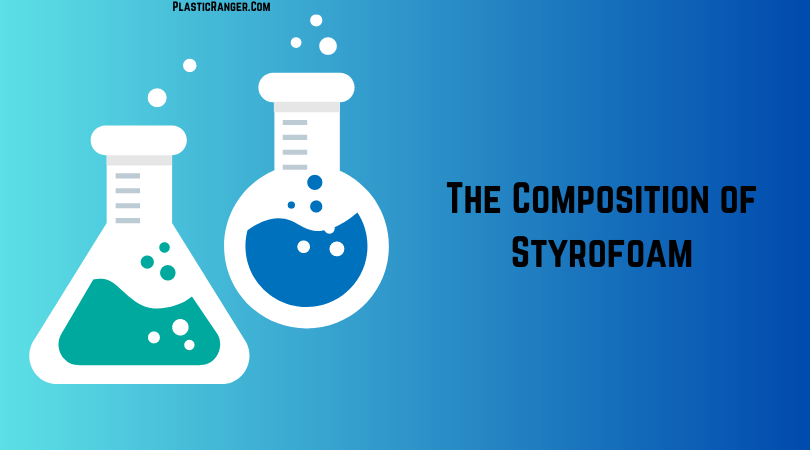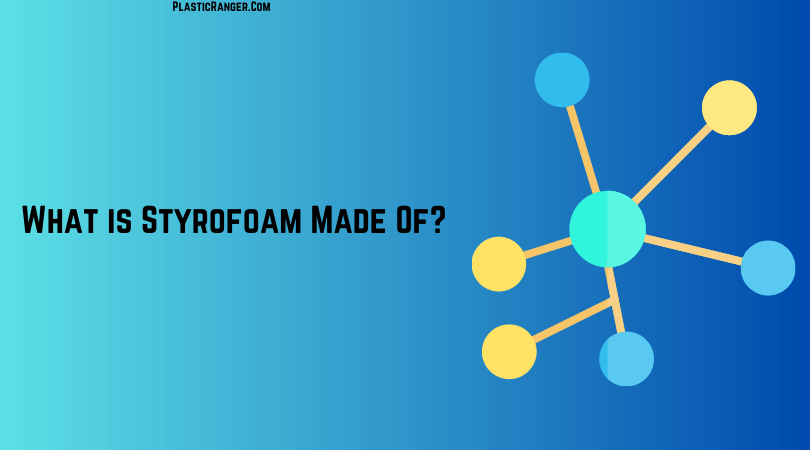What is Styrofoam Made Of?
Styrofoam is made by expanding polystyrene, a petroleum-based polymer, with a blowing agent like pentane or carbon dioxide. The process creates a lightweight foam with trapped air pockets, making it an excellent insulator and versatile material.
You’ve probably seen it many times: that white, lightweight, and sometimes squeaky material used in packaging, insulation, and even arts and crafts. But have you ever wondered what Styrofoam is made of?
In this article, we’ll dive deep into the process of making Styrofoam, its composition, its general properties, its typical applications, and the environmental impact it creates.
The Process of Making Styrofoam
Creating Styrofoam begins with the production of polystyrene, a petroleum-based polymer.
Styrene molecules, derived from benzene and ethylene, are bonded through a chemical reaction called polymerization. This forms long chains of polystyrene. Next, the polystyrene is combined with a blowing agent, typically pentane or carbon dioxide.
This mixture is then heated, causing the blowing agent to vaporize and create tiny pockets of gas within the material. As the temperature rises, the polystyrene beads expand to 40 times their original size.
The foam beads are then placed in a mold, and steam is applied, causing the beads to expand further and fuse, forming a solid block of expanded polystyrene (EPS) foam.
Once the EPS block has cooled and solidified, it can be cut and shaped into various forms, such as sheets, blocks, or customized shapes for specific applications.
The final product, Styrofoam, is a lightweight, insulating, and versatile material used in various industries, from packaging and insulation to arts and crafts.
History of Styrofoam
The history of Styrofoam dates back to 1941 when the Dow Chemical Company invented it as a versatile insulating material. The term “Styrofoam” is a brand name; however, it has become synonymous with the material, much like Kleenex is to facial tissue.
The proper name for Styrofoam is expanded polystyrene foam (EPS). Ray McIntire, a chemical engineer at Dow Chemical, discovered Styrofoam by accident while trying to develop a flexible electrical insulator.
Under pressure, he combined styrene, a petroleum derivative, with isobutylene, a volatile liquid hydrocarbon. The resulting material was a rigid, lightweight foam with excellent insulation properties.
During World War II, Styrofoam was used as a flotation device in life rafts, providing buoyancy and insulation.
Its use quickly expanded after the war as industries recognized its potential in various applications. Styrofoam became an indispensable material in construction, packaging, and shipping due to its lightweight, insulating, and protective properties.
The Composition of Styrofoam

Polystyrene
At its core, Styrofoam is made of polystyrene, a synthetic, petroleum-based polymer. Polystyrene comprises long chains of styrene molecules derived from the combination of benzene and ethylene.
Unique Properties of Styrofoam
Durability
Despite its lightweight nature, Styrofoam is surprisingly strong and durable. The closed-cell structure of the foam provides a high level of resistance to compression and impact, making it suitable for various applications where protection is needed.
Lightweight
One of the most distinctive properties of Styrofoam is its lightweight nature. Because it’s made up of 95% air, Styrofoam is incredibly lightweight, making it ideal for various applications, such as packaging and shipping.
Insulation
Styrofoam is an excellent insulator due to the trapped air pockets within the material. These pockets slow heat transfer, making them popular for building insulation and temperature-sensitive packaging.
Common Applications of Styrofoam
Packaging
One of the most common uses of Styrofoam is in packaging materials. Its lightweight and insulating properties and durability make it ideal for protecting fragile items during shipping.
Insulation Materials
As mentioned earlier, Styrofoam’s insulating properties make it an excellent choice for building insulation. It can be found in insulation panels, pipe insulation, and even insulated concrete forms for construction.
Craft and Art Projects
Due to its ease of cutting and shaping, Styrofoam is a popular material for craft and art projects. It can be used to create sculptures, decorations, and theatrical props.
The Environmental Impact of Styrofoam
Non-biodegradable Nature
One of the significant drawbacks of Styrofoam is its environmental impact. Being a petroleum-based product, Styrofoam does not biodegrade quickly. It can take hundreds of years to break down, leading to an accumulation of waste in landfills and, unfortunately, sometimes in our oceans.
Recycling Efforts
Recycling Styrofoam can be challenging due to the need for specialized equipment and facilities. However, ongoing efforts are to develop more efficient recycling methods and encourage using recycled EPS in producing new products.
Alternatives to Styrofoam
Several alternatives have emerged in light of the environmental concerns associated with Styrofoam, such as biodegradable packaging materials made from PLA plastic, cornstarch-based foams, and even mushroom-based materials. These eco-friendly options are becoming increasingly popular as businesses and consumers seek more sustainable solutions.
Conclusion
That is all I wanted to say about what is styrofoam made of. expanded polystyrene foam is a versatile and lightweight material with numerous applications thanks to its unique properties. However, its environmental impact cannot be overlooked. As we strive to create a more sustainable future, we must consider alternatives to Styrofoam and support recycling efforts to minimize its adverse effects on our planet.
Thank you for taking the time to read. Wishing you a delightful day ahead.
Quick Navigation

